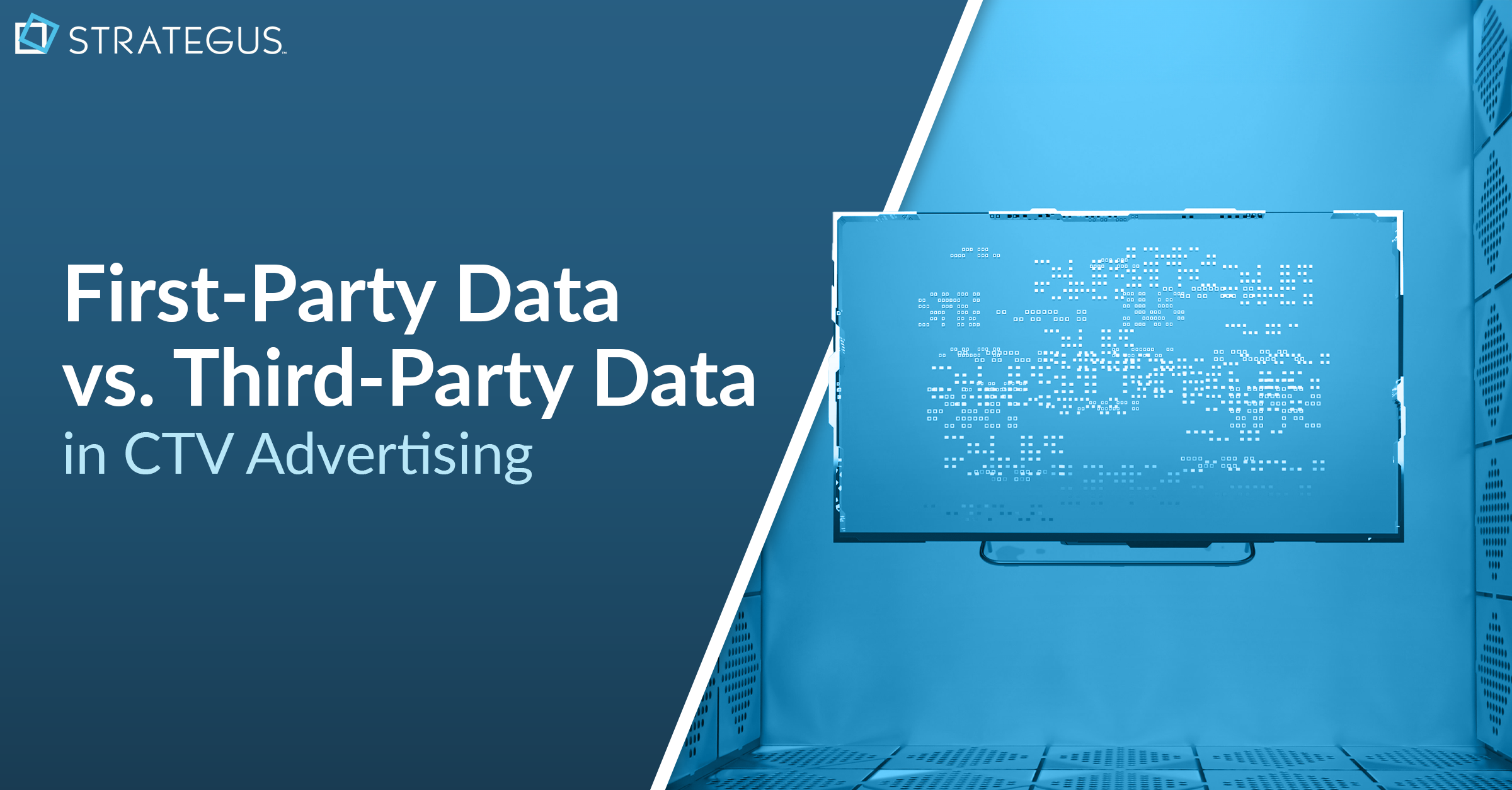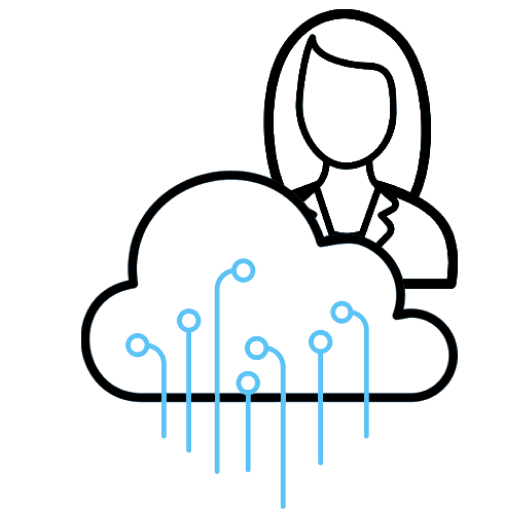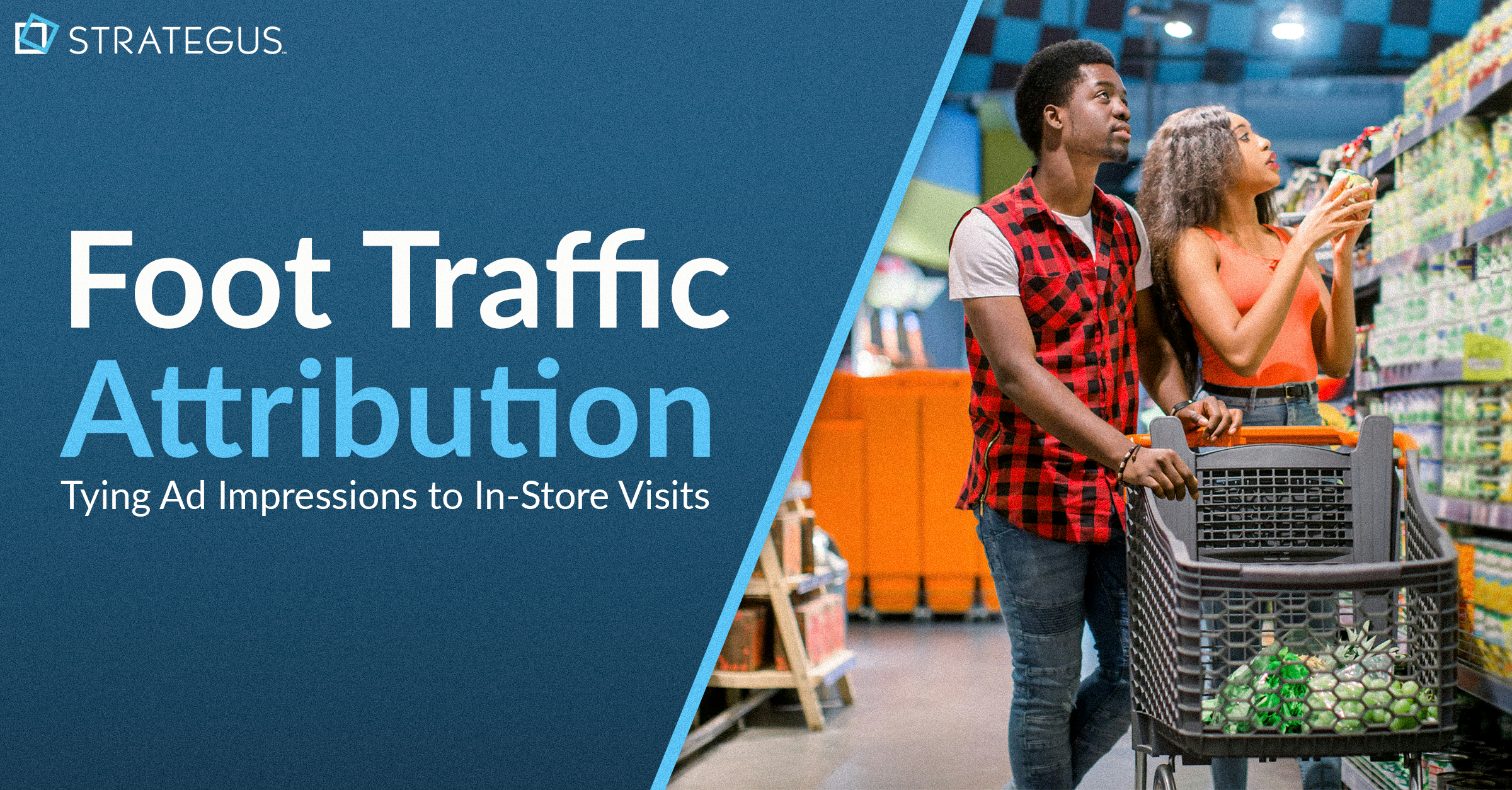- Home
- Strategus Blog
- First-Party Data vs. Third-Party Data in CTV Advertising
First-Party Data vs. Third-Party Data in CTV Advertising
 Traci Ruether
Traci Ruether
62 minutes read

Ad tech runs on data. But not all data is collected and shared in the same way. Cue in first-party vs. second-party vs. third-party data.
Any marketer with their ear to the ground knows that an overreliance on external data sources (a.k.a. third-party data) is risky. Why? Privacy regulations like the EU’s GDPR and California’s CCPA set strict guidelines on how companies can gather and share data — putting tools like third-party cookies in jeopardy.
Third-party data also lacks the same reliability and specificity as information gathered internally. There’s often little transparency into how this data is processed and the origin isn’t always disclosed.
For these reasons and more, brands are investing in direct data collection, a.k.a. first-party data. This involves consensually gathering information from customers and prospects through owned channels like your company website, app, and email lists.
So what exactly is the difference between first-, second-, and third-party data? And how can advertisers navigate the evolving regulatory landscape without sacrificing their reach and attribution?
We break it all down below, with a focus on how different data sources can be used to plan and measure connected TV (CTV) advertising campaigns.
Types of Data at a Glance

Here’s a side-by-side of the three main categories of data that marketers use — followed by a deeper dive into each.
|
|
|
|
|
|
Summary |
|
Data that’s shared between two businesses through a partnership, acquisition, co-branding, etc. |
Data aggregated and sold by external companies or data providers without a direct link to your business. |
|
Example |
A CRM list containing the contact information, interests, and demographics of customers. |
|
Insight into potential customers’ dietary habits, shopping preferences, and income gathered by third-party providers. |
|
Benefit |
Reliable, accurate, and unique info about a brand’s audience that’s compliant with data privacy regulations. |
|
Comprehensive information that acts as an additional data point for understanding the market as a whole. |
|
Limitation |
|
Dependence on the trustworthiness of a partner; potential privacy and compliance issues. |
Can be less accurate than first- and second-party data and is experiencing signal loss due to how it’s collected. |
First-Party Data Explained

First-party data is collected directly from the users interacting with a brand. It usually takes the form of prospect and customer data obtained via touchpoints like in-store purchases, website interactions, online purchases, surveys, and subscriptions.
This data is valuable because it’s sourced internally and provides unrivaled insight into a company’s target audience. That said, first-party data is limited to what an organization can collect from users willingly, which is why things like viewing preferences, major life events, and more often fall outside of this purview.
One of the most common examples of first-party data is a company’s CRM list, which is a lot like a souped-up Rolodex. Within a CRM, companies can gather user-specific information like:
- Contact information (name, email, phone number, address)
- Purchase history and transaction details
- Customer service interactions and support tickets
- Website behavior and engagement metrics
- Email open rates and click-through rates
- Demographic information (age, gender, occupation)
- Preferences and interests indicated by the customer
- Loyalty program data and rewards points
This data can then be used to create detailed buyer profiles and personalize ad campaigns to different segments.
Second-Party Data Explained

Second-party data is basically first-party data once removed. More specifically, it’s data that’s gathered internally by one organization and then shared with another closely related company.
Often, this is sourced from publishers, partners within the same supply chain, or through mergers and acquisitions. For instance, if a health food store cohosted an event with a kombucha brand sold in its own stores, the two companies could share their contact lists to promote the event — using the power of second-party data.
But second-party data can also be monetized for advertising. Consider a publisher like Netflix that has proprietary data about the shows their viewers like to watch, where they’re located, and how they engage with their platform. Once this data is shared to help advertisers build targeted ad campaigns, it becomes second-party data.
And this is exactly why there’s so much confusion across these terms. One man’s first-party data is another man’s second-party data, if you get what I’m saying.
The Current’s John McDermott explains:
“Second-party data is nearly identical to first-party data, in that it’s data a company collects through a direct relationship with a user. In the case of first-party data, it’s the relationship between a brand and the people who buy that brand. For second-party data, it’s a relationship between a web publisher and its readers, viewers, visitors, users, or customers.
In both cases, it’s a one-to-one relationship. The difference is merely a matter of perspective. When advertising executives talk about first-party data versus second-party data, they’re assuming the perspective of a brand marketer. The brand, the first party, supplies its own data, and combines it with data supplied by a publisher, the second party.”
And while second-party data provides a ton of value, marketers should still be wary of big tech’s walled gardens due to the constraints that they put on data portability and the regulatory scrutiny that they face.
More specifically, platforms like Google often make it difficult for advertisers to transact and measure performance across different channels by setting strict rules about how their data is used. Instead, these walled gardens constrain marketers to place ads within their closed ecosystems, limiting their ability to incorporate data from multiple sources and build comprehensive cross-channel campaigns.
Third-Party Data Explained

Finally, we arrive at third-party data, which is information acquired by external sources. This data belongs to neither publishers nor advertisers, but rather third-party aggregates.
Usually, this information is purchased from data management platforms and offers a broader view of the market. Advertisers rely on third-party data to identify new audience segments, enhance audience targeting strategies, and inform marketing strategies.
Popular data management platforms (DMPs) include Amazon, Mastercard, and Microsoft. That’s right — the companies that many of us rely on daily to buy groceries and conduct business are, in fact, powerful data companies.
Common examples of the information these providers collect and share include:
- Demographic information: Age, gender, income level, and education.
- Online behavior: Browsing history, technology usage, purchase patterns, and engagement with digital platforms.
- Interests: Insight into consumer interests, hobbies, dietary preferences, and habits.
- Purchase history: Information about consumer purchases across different retailers and platforms.
Unlike first-party data, this information provides a macro look at the customer landscape. Competitors can access the same information by working with the same data provider. This also makes third-party data less precise than customer information gathered internally.
But by combining first- and third-party data, marketers can achieve a balance of precision and scale. Tactics include building look-alike audiences from your own internal data, enhancing your campaigns with creative that’s personalized to individual segments, and identifying cold leads who are ready to make a purchase based on real-time buying signals.
Where Does Retail Data Fit Into This

Another category that can fall into any of the buckets detailed above is retail data. Retail data describes the customer information collected by major commerce brands like Walmart, Kroger, and Amazon.
This can include:

Customer profiles with basic demographic information (age, gender, location) and contact details (email, phone number)
Website and app activity ranging from browsing history, cart abandonment rates, and click-through rates on online platform

Purchase history with detailed records of past purchases, including dates, products, quantities, and amounts spent
-
- And More.
When this insight is used by the retailers to nurture their own existing customers — like when Kroger sends me coupons for my frequently purchased items — it falls in the realm of first-party data. But when this info is shared with external brands and advertisers to reach new customers and measure business outcomes, it becomes second- and third-party data.
Let it be known: This data is super valuable. Unlike third-party cookies that make assumptions based on online activity, retail data is sourced directly from the buyers that brands are trying to reach.
Many of the top retailers today are transforming into data and media companies for this very reason.
Just think about it: Amazon now claims the most extensive shopper data available and went all-in on programmatic CTV advertising earlier this year. Meanwhile, Walmart continues to grow its CTV advertising footprint and monetize shopper data through the acquisition of Vizio and subsequent partnership with Disney Advertising.
Retail data and new deterministic identifiers like The Trade Desk’s Unified ID 2.0 are also much more stable and reliable sources of insight that other third-party tools (*cough* cookies), which is why some are calling retail audiences “the future of data when it comes to programmatic.”
To take full advantage of this, though, advertisers should look for a CTV partner that offers a complete view of consumer behavior through integrations across multiple retail platforms.
How All of This Relates to Signal Loss
Between legislation like California’s Consumer Privacy Act (CCPA), frameworks like Apple’s App Tracking Transparency (ATT), and the deprecation of third-party cookies in browsers, the industry is moving to a privacy-first approach.
And while these data privacy initiatives are positive for the industry, many brands are nervous about the challenges they present — namely, signal loss.
Signal loss refers to the reduced ability of marketers to access the data used for targeting and measurement. This phenomenon is entirely tied to the industry’s dependence on third-party and second-party data, which is being hindered by privacy compliance and the regulatory scrutiny of major tech platforms.
But that’s not to say that brands can’t combat this reality.
Here are the levers that marketers can pull:
- First-party data: First and foremost, companies must prioritize first-party data collection and activation — something 71% of brands, agencies, and publishers are doing according to the IAB.
- Cookieless channels: It’s also a good idea to invest in channels that are less dependent on third-party data, such as CTV and social media.
- Alternative tactics: Alternative data collection tools like identity graphs and more compliant targeting tactics like contextual targeting should come into play.
- Data diversification through an open-internet approach: And finally, you’ll want to prioritize vendor-agnostic solutions that can incorporate multiple data sources to find your audience across a wide range of inventory sources.
All of these strategies are key to how we approach targeting and measurement at Strategus, which is why the industry’s transition towards privacy-by-design hasn’t presented any major obstacles for the agencies and brands that partner with us.
What Does This Mean for CTV Advertising
A cookieless future is coming. So, too, is ongoing regulation of how big tech players like Google share and monetize their data. But by focusing on first-party data strategies and alternative data collection tool, brands can easily navigate these developments.
Christine Foster, VP of product strategy and media operations at Kroger Precision Marketing, reinforces this point: “Third-party cookies were never a good solution for consumers or brands. First-party data remains the most trusted and effective means to reach relevant audiences."
And luckily, CTV has been cookieless for some time, making it well-positioned for this shift. In fact, the Interactive Advertising Bureau (IAB)'s 2024 State of Data report shows ad buyers are increasing CTV spend as a direct response to signal loss in other channels.

Still not convinced? Just take it from our own co-founder and EVP of innovation, Joel Cox:
Preparing for a Cookieless Future With Strategus
To recap, there are three powerful sources of data in the digital advertising world: first-party, first-party, and third-party.
|
|
|
|
|
|
|
And when you partner with Strategus, you get a blend of all three. We start by getting to know your brand, your goals, and your target audience. From there, we combine every relevant data point at our disposal — including your CRM, internal insight, retail media, our ecosystem of 200+ data partners, insight from the publishers and DSPs we integrate with, and more.
We work with you to identify the perfect mix of data to build custom audiences. This could mean using Amazon shopper data to find viewers who’ve been shopping for similar products or Edmunds automotive data to find in-market car buyers.
But we don’t stop there. We’ll also partner with you to launch and optimize these CTV campaigns as an extension of your team. In other words, we combine data-driven tech with human-centered strategy and execution.
Take a look at our customer CTV targeting solutions below — or contact us to learn how we can work with you to build custom audiences through a layered approach.

Website Retargeting
Re-engage warm leads on the big screen and lure online shopper back to their abandoned carts. This keeps your brand top of mind after leads step away from the computer.

First-Party Data
Leverage customer data from your CRM to deliver personalized CTV ads directly to your contacts’ living rooms.

Look-Alike-Modeling
Expand your reach by building custom lookalike audiences. This powerful tactic is our second-best performer for driving results.

ACR Data Targeting
Reach specific households based on their TV viewing habits and interests for precise audience alignment. This could mean showing an ad for a Lexus convertible on its way to a golf course to a viewer who regularly watches live golf.

Location-Based Retargeting
Reconnect with users who‘ve visited your stores — or conquest foot traffic from competitor locations. Both are powerful tactics to translate physical touchpoints into digital engagement.

Smart Audience Contextual
Reach consumers actively researching your services by targeting viewers based on the websites they’ve been visiting and keywords they’ve been typing into Google.

Amazon Data Targeting
Leverage Amazon purchase data to reach consumers actively shopping for products related to your campaign. For instance, a person who often purchases gluten-free products may see and commercial for a local health store.

Linear TV Extension
Bridge the gap between your linear TV campaigns and CTV by targeting households exposed to your TV ads for increased reach and frequency. A combination of both mediums ensures that your efforts aren’t siloed.

Traci Ruether is a content marketing consultant specializing in video tech. With over a decade of experience leading content strategy, she takes a metrics-driven approach to storytelling that drives traffic to her clients' websites. Follow her on LinkedIn at linkedin.com/in/traci-ruether or learn more at traciruether.com.
Strategus is a managed services connected TV(CTV) advertising agency with over 60,000+ campaigns delivered. Find out how our experts can extend your team and drive the result that matter most.
Talk to an Expert
Table of Contents
Seeking a Custom CTV Strategy That Delivers?
What to read next

Third-Party Data Targeting for CTV: Benefits & Tactics
Third-party data. It’s a term that’s thrown around, and yet few take the time to detail its pros and cons — much less strategies for using...
7 minutes read

First-Party Data Targeting: Benefits and Tactics for CTV Advertising
First-party data is the information that companies collect directly from their customers rather than through intermediaries. Advertisers use this...
10 minutes read

Foot-Traffic Attribution: Tying Ad Impressions to In-Store Visits
The marketing funnel has changed. Today’s shoppers often begin researching products from the comfort of their homes and don’t set foot into a store...
8 minutes read

CTV Attribution: What It Is and How It Works
Connected TV (CTV) viewing is on the rise — and that’s good news for marketers. Not only can CTV ads be precisely targeted to individual households,...
9 minutes read















